
Bell-shaped vessels from the Neolithic and Early Bronze Age can be found regionally in different parts of Europe. This beaker pot comes from Spain. © Museo Arqueológico Nacional, CC BY-SA 4.0
In the largest study of ancient DNA ever conducted, an international team of scientists has revealed the complex story behind one of the defining periods in European prehistory. The study is published this week in the journal Nature. Between 4,700-4,400 years ago, a new, bell-shaped pottery style spread across western and central Europe. For over a century, archaeologists have tried to establish whether the spread of “Beaker” pottery represented a large-scale migration of people or was simply due to the spread of new ideas. “The pot versus people debate has been one of the most important and long-running questions in archaeology,” says co-senior author Ian Armit, an archaeologist from the University of Bradford.
Starting around 8,500 years ago, agriculture spread into Europe from the southeast, accompanied by a movement of people from Anatolia. This study reports data from the genomes of 225 ancient people who lived both before and after this transition, and documents the interaction and mixing of these two genetically different groups of people. “Southeastern Europe was the beachhead in the spread of farming from Anatolia into Europe. This study is the first to provide a rich genetic characterization of this process by showing how the indigenous population interacted with incoming Asian immigrants at this extraordinary moment in the past,” says Songül Alpaslan-Roodenberg, a consulting anthropologist at Harvard Medical School, who identified and sampled many of the skeletons.

a, Proportion of steppe-related ancestry (in black) in Beaker-complex-associated groups computed with qpAdm2 under the model ‘Steppe_EBA + Anatolia_N + WHG’ (WHG, Mesolithic western European hunter-gatherers). The area of the pie is proportional to the number of individuals (number shown if more than one). Map data from the R package ‘maps’. b, f-statistics of the form f4(Mbuti, test; Iberia_EN, LBK_EN) computed for European populations (number of individuals for each group is given in parentheses) before the emergence of the Beaker complex (Supplementary Information section 7). Error bars represent ± 1 standard errors. c, Testing different populations as a source for the Neolithic ancestry component in Beaker-complex-associated individuals. The table shows P values (* indicates values > 0.05) for the fit of the model: ‘Steppe_EBA + Neolithic/Copper Age’ source population. Nature, DOI: 10.1038/nature25738
“In some places, hunter-gatherers and incoming farmers seem to have mixed very quickly,” says first author Iain Mathieson, a geneticist at the University of Pennsylvania, “but mostly the two groups remained isolated, at least for the first few hundred years. These hunter-gatherers had been living there for thousands of years, and it must have been quite a shock to have these new people show up — with a completely different lifestyle and appearance.”
“Three thousand years later, they were thoroughly mixed,” continues David Reich of Harvard Medical School, the Broad Institute of MIT and Harvard, and the Howard Hughes Medical Institute, who co-directed the study. “Some populations derived up to a quarter of their ancestry from hunter-gatherers.” In other parts of Europe, this mixing was marked by a so-called sex bias, with most of the hunter-gatherer ancestry contributed by men. In the southeast, however, the pattern was different. “This shows that the mode of interaction between the two groups was different in different places, something we need to try to understand in the context of the archaeological evidence,” added Mathieson.

a, Geographic distribution of samples with new genome-wide data. Random jitter was added for sites with multiple individuals. Map data from the R package ‘maps’. b, Approximate time ranges for samples with new genome-wide data. Sample sizes are given next to each bar. c, Principal component analysis of 990 present-day west Eurasian individuals (grey dots), with previously published (pale yellow) and new ancient samples projected onto the first two principal components. Nature, DOI: 10.1038/nature25738
Genetic shifts in Germany and Great Britain
The new paper also dramatically increases the number of samples from the population of hunter-gatherers that inhabited Europe before the farmers. The study reports a particularly rich sampling of forty hunter-gatherers and early farmers from six archaeological sites from the Iron Gates region, which straddles the border of present-day Romania and Serbia. The genetic results show that the region witnessed intensive interaction between hunter-gatherers and farmers. Out of four individuals from the site of Lepenski Vir, for example, two had entirely Anatolian farmer-related ancestry, fitting with isotope evidence that they were migrants from outside the Iron Gates region, while a third individual had a mixture of ancestries and consumed aquatic resources, as expected if farmers were being integrated into hunter-gatherer groups or were adopting a hunter-gatherer lifestyle.
“These results reveal the relationship between migrations, admixture, and subsistence in this key region and show that even within early European farmers, individuals differed in their ancestry, reflecting a dynamic mosaic of hunter-farmer interbreeding,” adds Ron Pinhasi, an anthropologist at the University for Vienna, who co-directed the study.
The new paper also reports ancient DNA from the people who lived at iconic archaeological sites such as Varna, one of the first places in the world where there is evidence of extreme wealth inequality, with one individual from whom the study obtained data buried with more gold than all other known burials of the period. “The DNA from the famous Varna burial is genetically similar to that of other early European farmers. However, we also find one individual from Varna and several individuals at neighboring sites in Bulgaria who had ancestry from the eastern European steppe. This is the earliest evidence of steppe ancestry this far west—two thousand years before the mass migration from the steppe that replaced more than half of the population of northern Europe,” says Johannes Krause, Director of the Department of Archaeogenetics at the Max Planck Institute for the Science of Human History, who led the work on Varna.
Adds Reich, “These very large ancient DNA studies, involving intense collaboration between geneticists and archaeologists, make it possible to build up a rich picture of key periods of the past that could only be weakly glimpsed before. Studies on this scale represent a coming of age for the field of ancient DNA – I look forward to what we will learn when similar approaches are applied elsewhere in the world.”
This study was conducted by an international team of 117 archaeologists, anthropologists, and geneticists from 82 institutions across Europe and the United States.

In many regions of Europe, skeletons were found which had been buried with beaker cups. Their DNA sheds light on how the pottery spread. © From Olalde et al. The Beaker phenomenon and the genomic transformation of northwest Europe. Nature, DOI: 10.1038/nature25738
Reference: “The Beaker phenomenon and the genomic transformation of northwest Europe” by Iñigo Olalde, Selina Brace, Morten E. Allentoft, Ian Armit, Kristian Kristiansen, Thomas Booth, Nadin Rohland, Swapan Mallick, Anna Szécsényi-Nagy, Alissa Mittnik, Eveline Altena, Mark Lipson, Iosif Lazaridis, Thomas K. Harper, Nick Patterson, Nasreen Broomandkhoshbacht, Yoan Diekmann, Zuzana Faltyskova, Daniel Fernandes, Matthew Ferry, Eadaoin Harney, Peter de Knijff, Megan Michel, Jonas Oppenheimer, Kristin Stewardson, Alistair Barclay, Kurt Werner Alt, Corina Liesau, Patricia Ríos, Concepción Blasco, Jorge Vega Miguel, Roberto Menduiña García, Azucena Avilés Fernández, Eszter Bánffy, Maria Bernabò-Brea, David Billoin, Clive Bonsall, Laura Bonsall, Tim Allen, Lindsey Büster, Sophie Carver, Laura Castells Navarro, Oliver E. Craig, Gordon T. Cook, Barry Cunliffe, Anthony Denaire, Kirsten Egging Dinwiddy, Natasha Dodwell, Michal Ernée, Christopher Evans, Milan Kuchařík, Joan Francès Farré, Chris Fowler, Michiel Gazenbeek, Rafael Garrido Pena, María Haber-Uriarte, Elżbieta Haduch, Gill Hey, Nick Jowett, Timothy Knowles, Ken Massy, Saskia Pfrengle, Philippe Lefranc, Olivier Lemercier, Arnaud Lefebvre, César Heras Martínez, Virginia Galera Olmo, Ana Bastida Ramírez, Joaquín Lomba Maurandi, Tona Majó, Jacqueline I. McKinley, Kathleen McSweeney, Balázs Gusztáv Mende, Alessandra Modi, Gabriella Kulcsár, Viktória Kiss, András Czene, Róbert Patay, Anna Endrődi, Kitti Köhler, Tamás Hajdu, Tamás Szeniczey, János Dani, Zsolt Bernert, Maya Hoole, Olivia Cheronet, Denise Keating, Petr Velemínský, Miroslav Dobeš, Francesca Candilio, Fraser Brown, Raúl Flores Fernández, Ana-Mercedes Herrero-Corral, Sebastiano Tusa, Emiliano Carnieri, Luigi Lentini, Antonella Valenti, Alessandro Zanini, Clive Waddington, Germán Delibes, Elisa Guerra-Doce, Benjamin Neil, Marcus Brittain, Mike Luke, Richard Mortimer, Jocelyne Desideri, Marie Besse, Günter Brücken, Mirosław Furmanek, Agata Hałuszko, Maksym Mackiewicz, Artur Rapiński, Stephany Leach, Ignacio Soriano, Katina T. Lillios, João Luís Cardoso, Michael Parker Pearson, Piotr Włodarczak, T. Douglas Price, Pilar Prieto, Pierre-Jérôme Rey, Roberto Risch, Manuel A. Rojo Guerra, Aurore Schmitt, Joël Serralongue, Ana Maria Silva, Václav Smrčka, Luc Vergnaud, João Zilhão, David Caramelli, Thomas Higham, Mark G. Thomas, Douglas J. Kennett, Harry Fokkens, Volker Heyd, Alison Sheridan, Karl-Göran Sjögren, Philipp W. Stockhammer, Johannes Krause, Ron Pinhasi, Wolfgang Haak, Ian Barnes, Carles Lalueza-Fox and David Reich, 21 February 2018, Nature.
DOI: 10.1038/nature25738

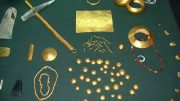
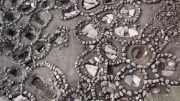
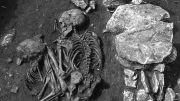
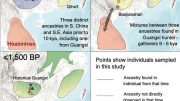
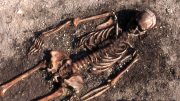
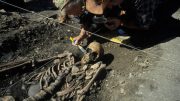
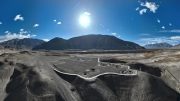

Thank you for sharing this important information. The overall picture that is emerging from these genetic, paleological, archaeological and anthropological studies is very interesting. For one thing it provides a richer aspect of Truth to draw from, when writing about those ancient times…a vast “slate” upon which to imagine great stories.
It is a very good scientific website and I used it a lot